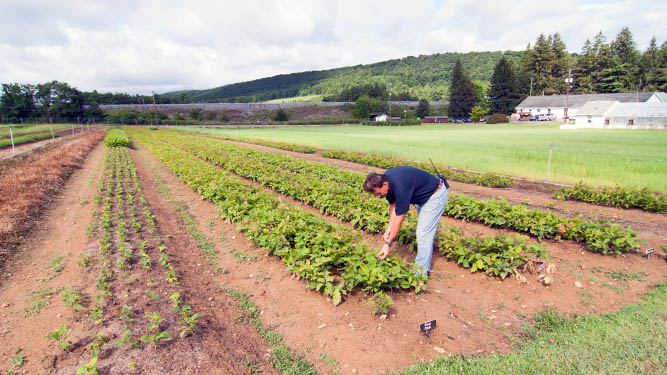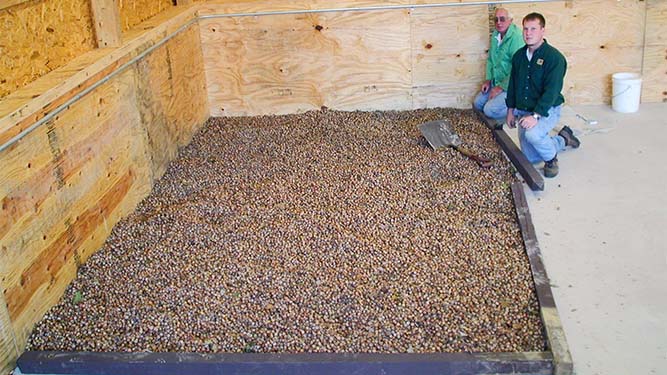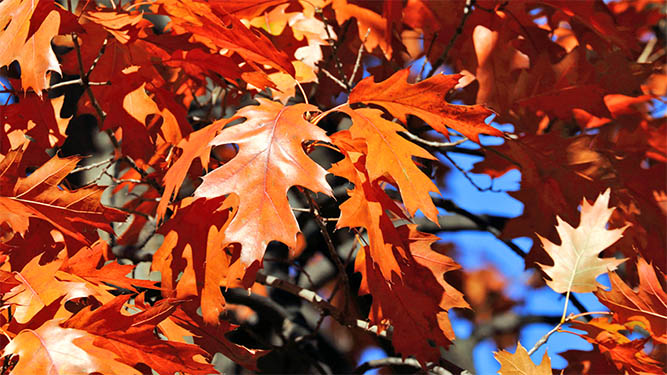Have you noticed large amounts of acorns on the ground this year?
That’s because throughout much of the Keystone State, it’s been a mast year for red oak acorn production, so much so that walking through some parts of the forest feels like you’re treading on marbles!
From the trees surrounding the capitol building in Harrisburg, to the countless more throughout our forests, you probably can find a large amount of acorns at the base of red oaks.
The Forest’s Bounty
The abundance of acorns is also seen in the amount collected at Penn Nursery at the Mira Lloyd Dock Resource Management Center, where DCNR staff were able to gather 133 percent of their red oak acorn collection goal -- coming in at more than 66 bushels.
Red oak seedlings grown at the nursery are often planted on sites that are known to lack natural red oak regeneration.

Replanting of red oak seedlings is common in areas with major spongy moth impacts, and in areas also affected by deer or invasive plants.
If you’ve spent enough time in a red oak forest, you probably noticed not every year is a good mast year.
That is because red oak acorns mature on a two-year cycle.
It can be likely that many red oaks in a particular stand will produce on the same schedule because these trees are subjected to similar environmental variables like pollination conditions, late spring frost, and rainfall -- or lack thereof.

Not only is this wealth of red oak mast a boon to wildlife this fall, but it’s also a great help in propagating a new generation of red oak trees at the nursery and in the wild.
Despite a high level of tannic acid causing them to taste bitter, deer, bears, turkeys, squirrels, and even blue jays take advantage of this seasonal resource.
One red oak acorn is reported to contain about 110 calories, almost two grams of protein, and nearly eight grams of fat.
High mast years significantly increase the odds of winter survival for many species of wildlife, while also contributing to higher birthrates.

Of course, not all acorns make good food for birds and mammals, or future oak trees. Some are quickly consumed by acorn weevils -- strange looking insects with a long snout known as a proboscis.
Acorns that are hollowed out by weevils will feel lighter and will float, an easy test to determine if they are viable seeds. If an acorn floats after a long soak, it is no good.
If you’re out and about in Penn’s Woods this fall, perhaps you’ll also notice it was great year for red oak mast. Just be careful not to slip!